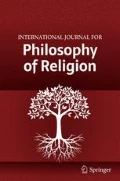Abstract
In this paper we examine and critique the constitution view of the metaphysics of resurrection developed and defended by Lynne Rudder Baker. Baker identifies three conditions for an adequate metaphysics of resurrection. We argue that one of these, the identity condition, cannot be met on the constitution view given the account of personal identity it assumes. We discuss some problems with the constitution theory of personal identity Baker develops in her book, Persons and Bodies. We argue that these problems render the constitution theory of personal identity as stated by Baker untenable. The upshot for the debate over the metaphysics of resurrection is that the constitution view of the metaphysics of resurrection must either be rejected or modified.
Similar content being viewed by others
References
Baker L. (1995). Need a Christian be a mind/body dualist?. Faith and Philosophy 12: 489–504
Baker L. (2000). Persons and bodies: A constitution view. Cambridge University Press, New York
Baker L. (2001a). Materialism with a human face. In: Corcoran, K. (eds) Soul, body and survival: Essays on the metaphysics of human persons, pp 159–180. Cornell University Press, Ithaca
Baker L. (2001b). Material persons and the doctrine of resurrection. Faith and Philosophy 18: 151–167
Baker L. (2002). The ontological status of persons. Philosophy and Phenomenological Research 65: 370–396
Baker L. (2004a). Christians should reject mind-body dualism. In: Peterson, M. and VanArragon, R. (eds) Contemporary debates in the philosophy of religion, pp 327–338. Blackwell, Malden, MA
Baker L. (2004b). Reply to Zimmerman. In: Peterson, M. and VanArragon, R. (eds) Contemporary debates in the philosophy of religion, pp 341–343. Blackwell, Malden, MA
Baker L. (2007). Persons and the metaphysics of resurrection. Religious Studies 43: 333–348
Baker, L. (2008). Big-tent metaphysics. Abstracta (Special Issue 1), 8–15
Baron-Cohen S. and Wheelwright S. (2004). The empathy quotient: An investigation of adults with Asperger Syndrome or High Functioning Autism and normal sex differences. Journal of Autism and Developmental Disorders 34: 163–175
Corcoran K. (2001). Physical persons and postmortem survival without temporal gaps. In: Corcoran, K. (eds) Soul, body and survival: Essays on the metaphysics of human persons, pp 201–217. Cornell University Press, Ithaca
Damasio A. and Maurer M. (1978). A neurological model for childhood autism. Archives in Neurology 35: 777–786
Frankfurt, H. (1988). The importance of what we care about. In The importance of what we care about (pp. 80–94). New York: Cambridge University Press.
Frankfurt, H. (1999). On caring. In Necessity, volition, and love (pp. 155–80). New York: Cambridge University Press.
Grossberg S. and Seidman D. (2006). Neural dynamics of autistic behaviors: Cognitive, emotional and timing substrates. Psychological Review 113: 483–525
Kennett J. (2002). Autism, empathy and moral agency. The Philosophical Quarterly 52: 340–357
McGeer V. (2004). Autistic self-awareness. Philosophy, Psychiatry and Psychology 11: 235–251
Minshew N., Goldstein G. and Siegel D. (1995). Speech and language in high-functioning autistic individuals. Neuropsychology 9: 255–261
Murphy N. (2006). Bodies and souls, or spirited bodies?. Cambridge University Press, New York
Olson E. (1997). The human animal. Oxford University Press, New York
Parfit D. (1971). Personal identity. The Philosophical Review 80: 3–27
Russo N., Flanagan T., Iarocci G., Berringer D., Zelazo P. and Burack J. (2007). Deconstructing executive deficits among persons with autism: Implications for cognitive neuroscience. Brain and Cognition 65: 77–86
Sigelman C. K. and Rider E. A. (2006). Life-span human development. Thomas Wadsworth, Belmont, CA
Van Inwagen P. (1978). The possibility of resurrection. International Journal for Philosophy of Religion 9: 114–121
Velleman J. D. (1996). Self to self. The Philosophical Review 105: 39–76
Author information
Authors and Affiliations
Corresponding author
Rights and permissions
About this article
Cite this article
Buckareff, A.A., Van Wagenen, J.S. Surviving resurrection. Int J Philos Relig 67, 123–139 (2010). https://doi.org/10.1007/s11153-009-9222-0
Received:
Accepted:
Published:
Issue Date:
DOI: https://doi.org/10.1007/s11153-009-9222-0



